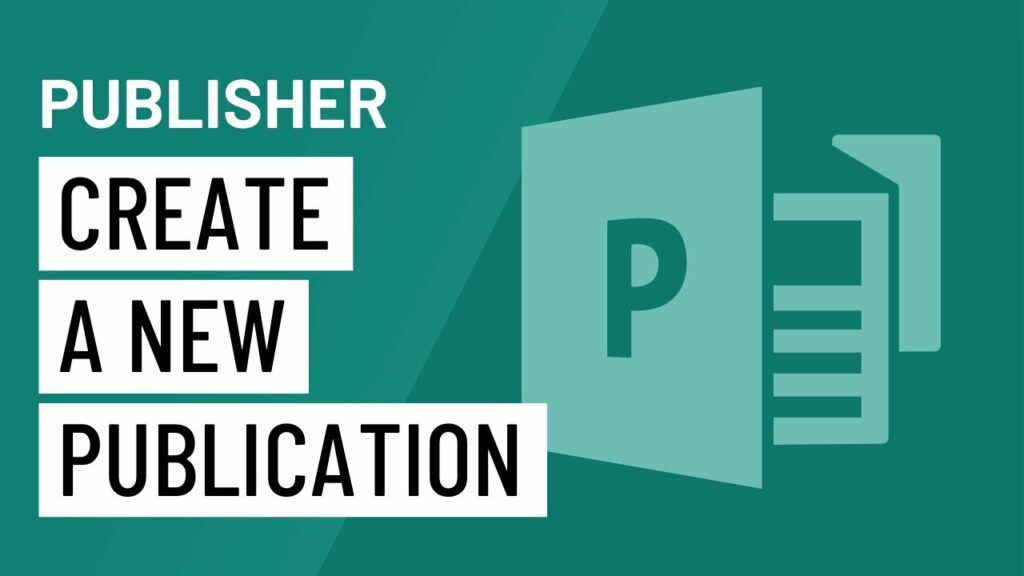The Complete Guide to Creating a New Publication in Publisher 2010: From Start to Finish

Introduction:
Microsoft Publisher 2010 is a versatile desktop publishing application that empowers users to create a wide range of publications, from flyers and brochures to newsletters and business cards. Creating a new publication in Publisher 2010 involves a series of steps, from selecting the right template to customizing design elements and finalizing the layout. In this comprehensive guide, we’ll walk you through the entire process of creating a new publication in Publisher 2010, providing detailed instructions, tips, and best practices along the way.
Section 1: Getting Started
1.1 Launching Publisher 2010: To begin creating a new publication in Publisher 2010, launch the application from the Start menu or desktop shortcut. Alternatively, you can open Publisher 2010 from within the Microsoft Office suite if you have it installed on your computer.
1.2 Choosing a Publication Type: Upon launching Publisher 2010, you’ll be prompted to choose a publication type from a variety of templates. Options include flyers, brochures, newsletters, business cards, calendars, and more. Select the publication type that best suits your needs and objectives.
1.3 Selecting a Template: Once you’ve chosen a publication type, browse through the available templates to find one that fits your design vision. Templates in Publisher 2010 are categorized by industry, style, and purpose, making it easy to find the right one for your project. Click on a template to select it and proceed to the customization stage.
Section 2: Customizing Your Publication
2.1 Editing Text: With your chosen template selected, you can now start customizing the content of your publication. Click on any text box within the template to edit the text. Replace placeholder text with your own content, such as headlines, body copy, contact information, or event details. Use the text formatting options in the Ribbon toolbar to adjust font styles, sizes, colors, and alignment.
2.2 Inserting Images: Enhance your publication by inserting images that complement your content and reinforce your message. Click on an image placeholder within the template to insert an image from your computer or online sources. Use high-quality images that are relevant to your publication and align with your branding or theme. Resize, crop, or rotate images as needed to fit the layout.
2.3 Adding Design Elements: Publisher 2010 offers a variety of design elements such as shapes, lines, icons, and decorative accents that you can use to customize your publication further. Click on the “Shapes” or “Graphics” tab in the Ribbon toolbar to access these design elements. Experiment with different shapes, colors, and styles to create visual interest and enhance the overall design of your publication.
2.4 Customizing Layout and Structure: Modify the layout and structure of your publication to suit your preferences and content requirements. Resize, move, or delete text boxes, image placeholders, and design elements to achieve the desired layout. Adjust page margins, orientation, and size settings as needed to optimize the presentation of your publication.
Section 3: Finalizing Your Publication
3.1 Reviewing and Proofreading: Before finalizing your publication, take the time to review and proofread the content for accuracy, clarity, and consistency. Check for spelling, grammar, and typographical errors, as well as formatting inconsistencies. Consider enlisting the help of a colleague or friend to provide a fresh perspective and catch any overlooked mistakes.
3.2 Previewing Your Publication: Preview your publication to see how it will appear to viewers before printing or sharing. Click on the “File” tab in the Ribbon toolbar and select “Print Preview” to view a digital representation of your publication. Check the layout, formatting, and overall presentation to ensure it meets your expectations.
3.3 Saving Your Publication: Once you’re satisfied with your publication, it’s time to save your work. Click on the “File” tab in the Ribbon toolbar and select “Save As” to choose a location and file format for your publication. Save a copy of your publication in Publisher format (.pub) for future editing and revisions. You can also export your publication to PDF or other compatible formats for printing or sharing.
3.4 Printing or Sharing Your Publication: Depending on your distribution needs, you can print your publication directly from Publisher 2010 or share it digitally via email, social media, or online platforms. Click on the “File” tab in the Ribbon toolbar and select “Print” to access printing options. Choose the desired print settings, such as paper size, orientation, and quality, and click “Print” to produce physical copies of your publication. Alternatively, select “Save & Send” to export your publication to PDF or other formats for digital sharing.
Conclusion:
Creating a new publication in Publisher 2010 is a straightforward yet customizable process that allows you to bring your design ideas to life with ease. By following the steps outlined in this guide and leveraging Publisher 2010’s tools and features, you can create professional-quality publications that effectively communicate your message, engage your audience, and achieve your objectives. Whether you’re designing a flyer for an event, a brochure for a business, or a newsletter for an organization, Publisher 2010 provides the flexibility and versatility to meet your publishing needs. With practice, creativity, and attention to detail, you can produce publications that leave a lasting impression and drive success in your endeavors.




